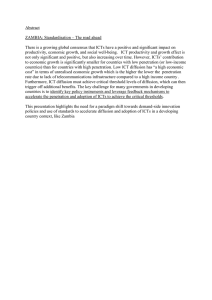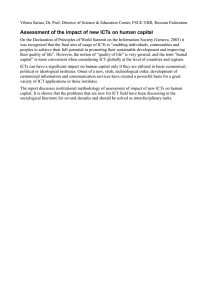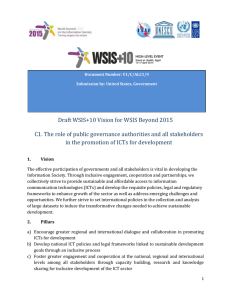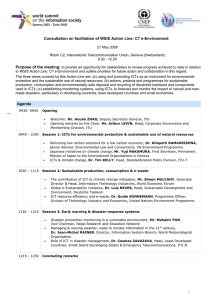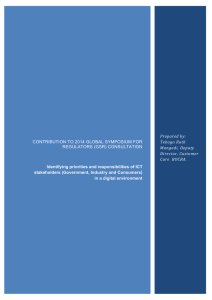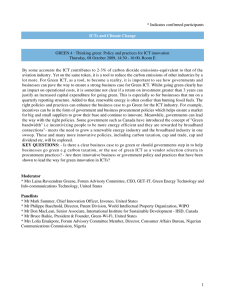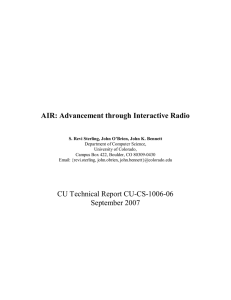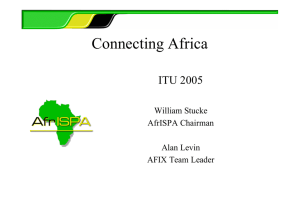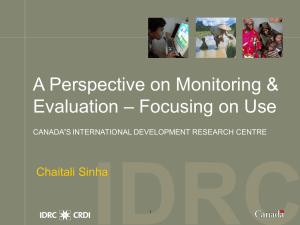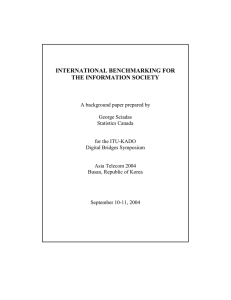Connecting the Dots Analytical Uses of ICT Statistics
advertisement
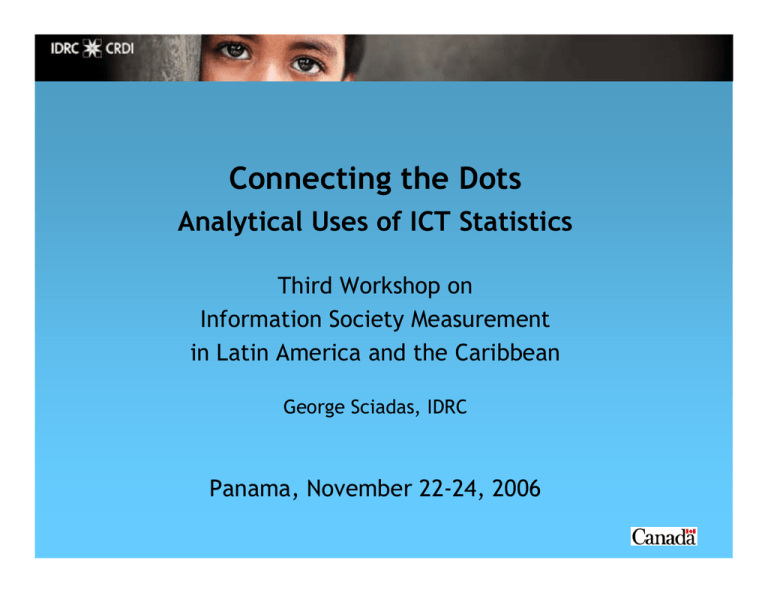
Connecting the Dots Analytical Uses of ICT Statistics Third Workshop on Information Society Measurement in Latin America and the Caribbean George Sciadas, IDRC Panama, November 22-24, 2006 Information Society statistics and analysis No miracle framework but… clear building blocks Information economy - supply side (ICT sector etc.) - demand side (people, business…) - prices, investment, trade etc. - labour, skills, training... Social outcomes and impacts National, regional and global processes Awareness and anecdotes Evidence-based decision making - the policy (and regulatory) front(s) - business strategies Research, analysis and evaluation Statistical data and indicators - core and beyond Post-WSIS environment Mainstreaming ICTs – everywhere • A time to question, agonize, convince, believe (tell “them” it’s important and why, how it links to policy etc.) A time to solidify basic measurements and move beyond - to focused investigation • (how best to measure, with a view to identify and exploit analytical linkages) The power of story-telling Micro, macro, sectoral and thematic (e.g. education, health and e-government, flows of information, knowledge management etc.) Cross-sectional and time-series data Outcomes and impacts, with emphasis on - stage of national context - the time dimension (or dynamic impacts) The power of story-telling Analytical journalism? The “other” stories, not told in daily news - people’s work and economic achievements - our social lives and changing communities - shifting landscapes, diversified influences and much more… Infostates 2003 HIGH ELEVATED Hypothetica = 117 INTERMEDIATE MODERATE LOW 6 30 72 110 193 255 Networks 2003 2003 1995 0 100 200 300 400 The Digital Divide remains huge In an overall sense it is narrowing somewhat – very slowly. But being a relative concept, the evolution of the Digital Divide needs detailed analysis, which reveals that: Countries in the middle - especially the upper-middle – of the Infostate scale made good progress against countries at the top; The progress by low-Infostate countries was not sufficient to close the gap and they were outpaced by most countries - except for those at the top with whom they are separated by huge gaps. Thus, the Digital Divide between countries with the lowest Infostates and most others is widening. Mainstreaming ICTs for development From pro-growth economic policies such as competition and trade to investments in education and health to specific issues, such as gender virtually no area is left untouched Example: ICTs and gender Women’s participation in the Information Society, particularly in the developing countries of the world, lags behind that of men Gender gaps persist even in countries with more developed Infostates At the same time, some countries with very low overall Internet penetration may not experience a gender divide Internet penetration and proportion of female users 70 Internet penetration 60 50 % 40 30 20 10 0 countries % female Additional issues to consider Analytical uses of statistical information - All sources, multiple ICT and non-ICT sources - integration with existing data structures Purpose-driven capacity building and training to: - leverage resources effectively - showcase and entice - really learn Our country, our region Cross-country benchmarking vs. specific local contexts - National (and sub-national) needs - Yes, but start…then you (may) find Partnerships, cultivation of demand and two-way interaction with - policy makers - major users Thank You George Sciadas gsciadas@idrc.ca www.idrc.ca
